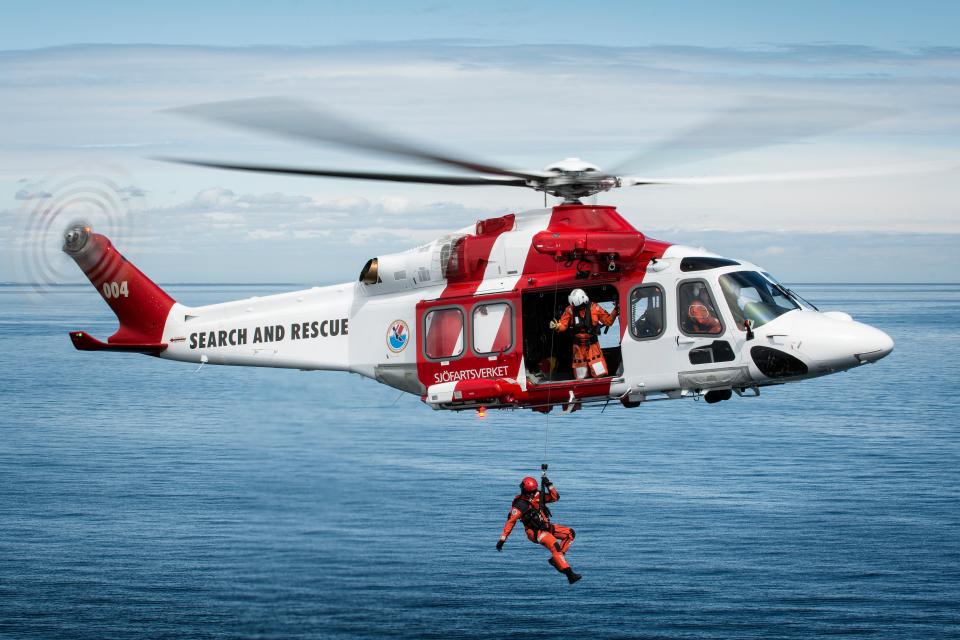Global Search and Rescue (SAR) Operations and Technology Update: Week of April 7-13, 2025
The past week saw significant developments in SAR operations globally. The biggest news is the conclusion of primary response operations regarding earthquake response efforts in Myanmar.
Other noted items include enhanced maritime capabilities in the North Sea and a 550% increase in SAR ops in a Washington State county.
International SAR Operations
Myanmar Earthquake Response Concludes
The Hong Kong Special Administrative Region rescue team has completed its search and rescue operations in earthquake-stricken areas of Myanmar and is now preparing to return home, as announced by the Fire Services Department on April 9. The team deployed to Myanmar on March 29. It worked alongside local authorities and the China Search & Rescue Team throughout their mission, demonstrating “unwavering dedication in difficult conditions,” according to an official statement. It’s great that organizations can put aside differences for the greater good.
During their operations, the combined SAR teams rescued nine survivors, including a pregnant woman, and the extraction of a 52-year-old man from the rubble of a hotel. Overall, emergency forces recovered 59 victims’ bodies, searched and inspected 287,000 square meters of residential buildings and vital infrastructure, and provided medical consultations for more than 2,000 disaster-affected individuals.
As of April 10, rescue crews from India, Malaysia, and Singapore had also completed their work and departed Myanmar. The 7.7-magnitude earthquake on March 28, described as one of Myanmar’s most powerful in a century, has resulted in over 3,600 fatalities, approximately 5,000 injuries, and more than 140 individuals still unaccounted for. The disaster caused extensive damage, demolishing nearly 49,000 homes and over 2,100 government structures.
North Sea SAR Service Enhancement
Offshore Helicopter Services UK (OHSUK) has secured an eight-year contract extension to provide North Sea search and rescue services, covering up to 10,000 offshore workers until at least 2032. The company is acquiring two new bespoke Leonardo AW139 helicopters to support this extended mission. All crew will be equipped with night vision goggles, and the helicopter’s redesigned cabin layout with distinctive blue and orange livery will be used.

Based in Aberdeen, OHSUK’s SAR crews provide 24/7 medical emergency coverage throughout a wide area of the North Sea, with response times as quick as 15 minutes from tasking to airborne status. Over the past decade, these crews have responded to nearly 1,000 emergency calls, demonstrating the critical nature of their services to offshore energy operations.
US Naval SAR Training Exercises
Helicopter Sea Combat Squadron TWO FIVE (HSC-25), currently aboard USS America (LHA 6), has been conducting intensive sea search and rescue training exercises. These drills encompass various scenarios, including lost swimmers, man overboard situations, and missing hikers, helping aircrew sharpen essential life-saving skills. As Aviation Machinist’s Mate 1st Class Nick Johnston noted, “If I failed at my job, it would cost a life. The threat of causing a catastrophe is what keeps us maintainers sharp.”
Skamania County, Washington, notes a 550% SAR increase in 20205
Skamania County, Washington, reported a record-breaking 550% increase in search and rescue missions for the first quarter of 2025 compared to the previous year. Rescues included hikers stranded during storms, injured kayakers, and climbers stuck on Mount St. Helens. The surge has stretched local resources, with most incidents involving non-residents—those darn tourists.
Technology and Policy Developments
Rescue Radar and Life Detectors at WCEMS
At the World Crisis and Emergency Management Summit (WCEMS) in Abu Dhabi (April 8–9), Dubai Police unveiled advanced tools for disaster response:
- Rescue Radar to locate survivors under the rubble.
- Portable life detectors and 360-degree search cameras.
- Drones and Can-Am ATV vehicles are equipped with firefighting and rescue tools. These technologies aim to improve efficiency in natural disaster zones, such as landslides and earthquakes.
Cross-Border Emergency Rescue Harmonization
A pioneering initiative co-financed by the EU Cohesion Policy addresses long-standing challenges in cross-border emergency response between Bavaria and Czechia. Previously, emergency services could not cross the border, resulting in complicated procedures and patient treatment delays.
The Bavarian Red Cross Cham District Association and rescue services in Pilsen are working together to ensure timely assistance regardless of nationality or location. Their collaborative efforts include:
- Contributing to the drafting of relevant legislation
- Coordinating regular cross-border exercises and seminars
- Offering cross-border internships for personnel
- Developing software solutions, including an app specifically designed to overcome language barriers
- Establishing a cross-border emergency coordination center
This initiative represents a significant step forward in international cooperation for emergency services and could serve as a model for other border regions worldwide.
